John Walda, NACUBO President and CEO, will retire at the conclusion of the association’s 2018 annual meeting, in Long Beach, Calif., July 21–24. At the helm for the past 12 years, Walda has led NACUBO in facing the great recession of 2008; celebrating its 50th anniversary in 2012; strengthening the management and programming of the four regional CBO associations; crafting the recently launched Strategic Blueprint—and much, much more.
Arriving at NACUBO in 2006, Walda, former partner in the law firm Bose McKinney & Evans, in Indianapolis, had already demonstrated a keen interest in higher education and its value. He has served in numerous leadership roles, including president of the Indiana University Board of Trustees for eight years, director and chair of the Association of Governing Boards, and as the first chair of the board of Clarian Health Partners (now Indiana University Health). He is currently the chair of the trustees of Carroll College, a trustee of Stetson University, and a director of the Indiana University Foundation.
He has taken particular interest in his work with the Washington Higher Education Secretariat, participation with leaders of the Council of Higher Education Management Associations (CHEMA), and collaboration with higher education leaders in influencing public policy.
Frequently addressing stakeholders from across the country, Walda often points to the value of pulling together and collaborating on higher education priorities, making him somewhat of an ambassador of the industry.
In the January 2018 issue of Business Officer, Walda writes: “Of course, we don’t know what other challenges may come our way… . Nevertheless, NACUBO will continue to keep you informed and to provide guidance and tools that allow us to come together and, with a firm and coordinated voice, support higher education’s priorities and promise.”
In an interview with Business Officer, Walda discusses the highlights of his tenure at NACUBO, the challenges that colleges and universities continue to face, and the priorities that are on his mind as he starts a new chapter.
Before we talk about NACUBO, I’d like to go back to the time before you joined the organization. You’ve had a distinguished career in at least two domains. What brought you into the world of higher education associations?
What’s motivated me most over the course of my career, and my life, has been working for causes. That goes back to my days in college—perhaps before that. Some of the causes have been political, some have been social, and some have been about community. And, of course, practicing law also gave me the opportunity to fight for meaningful causes.
During my legal career, I started to devote more of my days to higher education—it became my top concern. I became a trustee at Indiana University (IU), which is also my alma mater, and served in that position for 12 years. I also became active in the Association of Governing Boards, joining its board of directors and then serving as board chair. At one point, while I was active in both AGB and Indiana University, I was also the president of IU’s alumni association and the chair of the health corporation (Clarian Health Partners).
For a short time, it made sense for me to transition to part time in my law career, so that I could devote more volunteer time to those causes.
I saw how working on behalf of and through higher education could impact people’s lives in positive and dramatic ways.
One of my favorite stories about the transition from my law practice to higher education was a very memorable scene with Myles Brand, then-president of IU. Since he was president of the university and I was president of the board of trustees, we became very close friends.
At some point, I had just finished some major, national tobacco litigation, where I represented my home state of Indiana; and Myles could tell that I was a little burned out from that experience. He knew that I loved the world of higher education and the causes that we stood for, so he asked me if I would consider leaving my law practice, for at least two or three years, to work full time for Indiana University.
I thought that such a move would be fulfilling, so I accepted the invitation and became IU’s executive director of federal relations. I did eventually go back to my law practice for one year; and it was at the end of that year that I was recruited to lead NACUBO. I knew that serving as president and CEO would probably be the capstone of my career and the most fulfilling part of my professional life.
You’ve certainly brought a lot to the Washington Higher Education Secretariat, and your contributions to that group have been critically important over the years. That’s just one example of the leadership qualities you have brought to NACUBO and all of higher education. What I’ve seen in your leadership is a combination of passion and discipline. Tell me a little bit about where the passion comes from.
I was a first-generation college student and I knew, even at the time, that the experience was shaping my life and creating opportunities that I would never have been able to see if it weren’t for the university and the world of higher education.
I became involved in student government and rallying people for causes on campus. The most important thing about being passionate is seeing how it shapes not only your life, but the lives of others.
For example, when I go to a campus, I like to walk around or sit down in the student union and strike up conversations with students. I ask them about how their experience at their college began, how it is changing their lives, and what they look forward to as a result of earning a degree from their institution. Those are inspiring talks. I believe that if we continue to focus on how we shape the lives of the individuals and the communities that we serve then we’re doing the right thing.
As you look back over 12 years at NACUBO, what are the highlights of your time at the association?
There are so many. Generally speaking, it has been a highlight for me to get to know higher education leaders from around the country through the NACUBO Board of Directors, campus visits, the Washington Higher Education Secretariat, CHEMA, and the other associations of which NACUBO is a part. The friends and connections that I’ve made through these organizations are very special in my life.
Another key element was being president of NACUBO when we celebrated our 50th anniversary, at our annual meeting in 2012, which gave us the opportunity to look back at history. It was inspiring to learn what motivated people back in the early days of the association. Also, during the anniversary, I got to spend some time with and interview Mary Lai, who was the chief business officer at Long Island University for almost 58 years. She was one of the first women to become an active leader at NACUBO. It was a highlight to be able to learn about that history and how things have changed and evolved since those early days.
Lastly, developing, on three different occasions, a vision and strategic plan with NACUBO’s board of directors was significant, because I learned that these leaders have a good vision and strong ideas about the path that we need to take in order to continue our growth. Gaining confidence that the future of our member institutions—and for higher education in general—will prosper has definitely been a positive experience for me.
You are regarded as a master at the strategic planning process. One of the things that you have done in each of those strategic plans is to slightly shift the role of the CEO in response to changes in the environment and changes in the association. How have you and the board changed the role of the CEO over the past 12 years?
It has become increasingly important for NACUBO’s CEO to play a bigger role in higher education leadership circles. That’s driven largely by the fact that the challenges to the economic model of our institutions have increased, and, in some cases, threatened their viability.
My focus as CEO has been more external, and as the years progressed, I began to focus more on collaborations with other higher education associations and advocacy efforts on behalf of the higher education community. Advocacy has always been important at NACUBO, but we have recently increased our work in that space, because it has become more of a challenge.
Also, the expansion of NACUBO services has changed my job. Today, we do more research and our professional development programs have grown to include more live programming and virtual workshops. And, as I mentioned, a big part of my role has been creating more partnerships to help find solutions to the challenges in higher education. That will continue to be an important focal point for my successor.
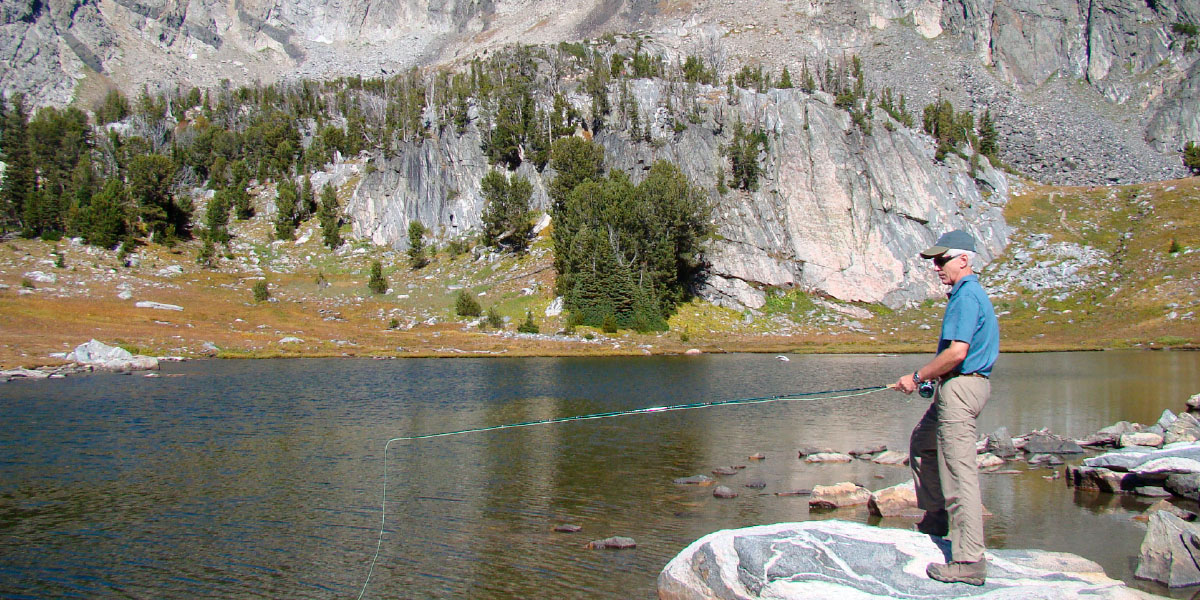
As you look back, 2006 must feel like a different era. How has higher education changed during that time, and what are the challenges that NACUBO members are now facing that they might not have experienced 12 years ago?
I remember writing an introductory letter to the NACUBO community that was published in the June 2006 issue of Business Officer magazine. As I revisited that letter, it’s clear that a lot has happened, but it’s amazing how much is still the same. I identified five major challenges for NACUBO and the higher education community—issues on which we should focus and try to find solutions.
The first point had to do with the declining ability and desire of states, and, to some degree the federal government, to support higher education. States had begun some disinvestment in higher education, much a result of the 2001 dot.com crisis. Little did we know that in 2008 and 2009, there would be a recession that would trigger an even bigger decline. Today, that remains a major concern for me, and I think that state spending needs to return to pre-recession levels. There are approximately 44 states that actually spend less per FTE now, when you adjust for inflation, than they did before the 2008 economic crisis.
As for the federal government, under the Obama administration, federal spending on higher education increased. When you look at the whole picture of undergraduate student aid by source and type, the federal government is certainly responsible for a large portion. This remains a concern, as higher education is being targeted for more cuts. We all need to be vigilant about paying attention to what’s to come.
The second issue was that of dealing with the public perception of higher education, and if a degree is worth the cost for students. Higher education has always had its critics, but, as time goes on, that perception is becoming even more negative. Some assert that (1) college costs too much, (2) it only serves the upper strata of society, (3) it saddles graduates with unmanageable debt, and (4) it fails to prepare students for jobs.
These misperceptions are fueled by anecdotes about students who ended up in bad circumstances. The fact is that higher education is more valuable as an investment now than it ever has been. When you consider median earnings, employability, civic engagement, and other factors, these are all very positive indicators.
Third was my concern about the challenges to our higher education business models—which have certainly not gone away. Institutions must pay attention to the fact that, on a national level, we have had enrollment declines over the past several years. In fall 2017, according to the National Student Clearinghouse, we saw enrollment decline for the sixth straight year. And, when you look at the pipeline of high school graduates, particularly in the Midwestern and Eastern regions of the country, the number is projected to continue to decline.
In 2017, we also saw a downward trend in international enrollments in our institutions. The decline could be accelerating for political reasons or perceptions about coming to America to go to school.
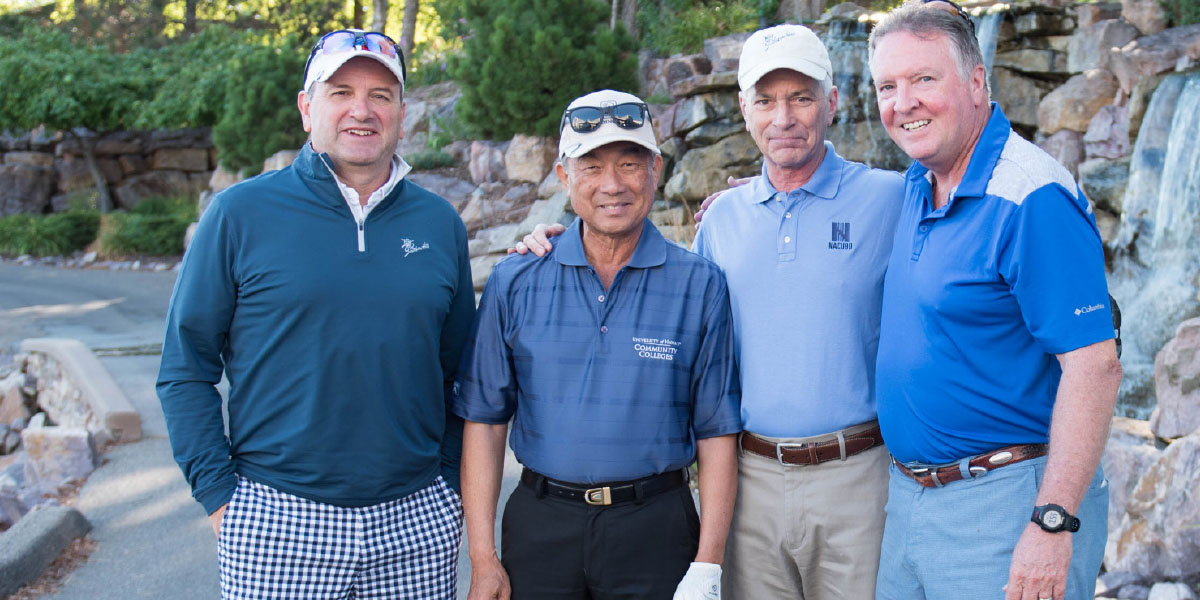
For private institutions, the concern there relates to tuition discounting, a topic that I also discussed in the 2006 letter. According to the 2017 NACUBO Tuition Discounting Study, tuition discounts for first-time, full-time freshmen have reached an all-time high of almost 50 percent. When adjusted for inflation, net tuition revenue for first-time, full-time freshmen, during four of the past six years, actually declined.
At NACUBO, we also look at endowments and how they relate to our economic models, especially as the need increases to use endowments to support our operations. The long-term data indicate that we can’t rely too heavily on endowments, because the 10-year return is 4.6 percent, while the average spend is about 4.5 percent. When you look at the long-term returns, we’re just breaking even and not even making up for the expenses that are involved in managing these endowments.
The fourth issue was higher education’s role in advancing sustainability and environmentalism. Since 2006, NACUBO has taken an important leadership role in that area and made an impact. For example, our key facilities metrics survey, done in collaboration with APPA, tracks institutions’ use of water, electricity, and power and allows campus leaders to make more informed decisions about facilities-related issues.
The final area of concern was the need for us to cultivate the next generation of business officers. It was clear, even back then, that there were a number of chief business officers who intended to retire in three to five years. We have done a lot to prepare the higher education business and finance leadership pipeline with programs like the NACUBO Fellows, New Business Officers, and Future Business Officers.
We have also been a leader in diversity from a gender perspective, hosting women’s leadership events at the annual meeting and on the regional level; these programs will have a positive and lasting impact on the chief business officer profession.
Looking ahead at the ongoing questions about higher education’s value and the sustainability of the business model—what predictions might you make about what we’ll still be talking about 12 years from now?
No doubt, these things will still be a challenge. However, I think that we can make a significant impact. We won’t completely resolve the issue of people’s perception, but we can be more proactive in advocating on behalf of higher education.
When I think back to 12 years ago, most of the advocacy work of NACUBO, and other associations, was reactive. Our work centered around a proposal in Congress or a proposal from the Department of Education. Today, much of our effort is focused on talking about the value of higher education in a very proactive way. Our efforts need to continue in that direction.
Changing the negative perceptions around higher education, will be a gradual process, and it will require that the higher education community—institutions and associations—work together to get the message out there.
I know that you’re most comfortable talking about the work, but who are the people who have had the greatest influence on your personal and professional growth?
There have been so many. Earlier I mentioned Myles Brand; he was a great higher education leader, who became a great friend. I learned so much from him.
I’m very thankful for the relationships that I’ve had with my colleagues on the Secretariat and at CHEMA. I have developed very strong networks through both organizations. We share ideas on a very regular basis and have formed collaborations that have benefited our member institutions.
I’d also have to single out the NACUBO Board of Directors. Each of the board chairs during my tenure—from Morgan Olsen during my first year to our current chair Mary Lou Merkt—has become a mentor and a friend to me. They helped guide my career and have offered constructive ideas about what we should be doing as an association. They have also served as role models, because I watched how they devoted their time and energy, even after they retired, to support higher education.
It has been my higher education association colleagues and the NACUBO Board who have had the greatest influence on my career.
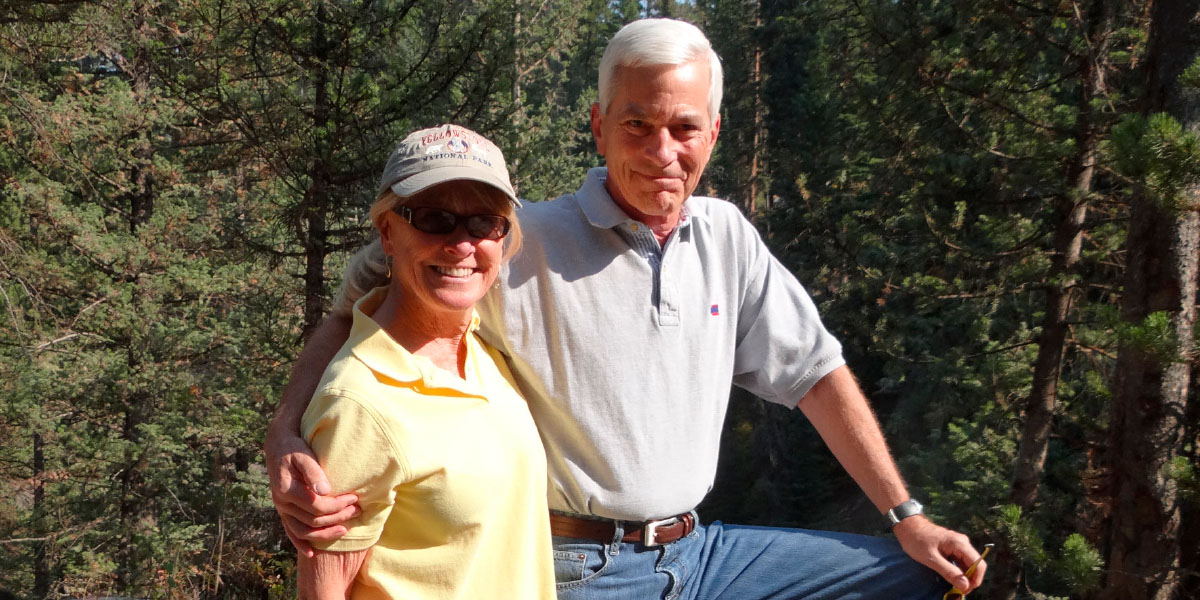
One of the unsung attributes of your great leadership has been your willingness and ability to mentor a new generation of leaders—financial officers, future presidents, and others. Talk about the importance of mentorship as it relates to your leadership.
I know how important it is, because I’ve been on the receiving side of mentoring from so many great people. Now, I see it as my responsibility to serve as a mentor to people who are new to higher education. A lot of that happens through associations, like CHEMA and the Secretariat. My colleagues and I have reached out to leaders who are new to these associations and organizations, forming good friendships and helping them to succeed.
You have to have that attitude in the world that we work in, because the focus needs to be on the success of the entire higher education community, not only the success of our associations. That’s really what drives me to want to be a mentor to others. We see ourselves as engaged, as leaders of the same cause.
As you begin to think about life after NACUBO, what will you miss? What advice do you have for your successor?
I’m very excited for Susan Whealler Johnston. I would advise her to do things that she’s probably already thought through completely and thoroughly. She also has an awesome staff at NACUBO that she can rely upon. They are a group of devoted individuals. Devoted to a cause beyond their own careers. I know that they will continue to make NACUBO a successful supporter of and advocate for our member institutions.
I encourage my successor to pay close attention to the goals that were identified in our strategic plan. Things like proactive advocacy and making tools available for more data-informed decision making and analytics. Also, finding solutions to issues like the business model and economics model. I think those strategic goals need to be the focus for my successor.
As for what I’ll miss, it will be my interactions with members of the higher education community.
Going to NACUBO’s regional meetings and being able to see the friends that I’ve made over the past 12 years—where we share our experiences, encourage one another, and plan for the future—has been a great part of my life and I will miss that the most.
How do you see your next chapter playing out?
I’ve made a pact with myself that for the first several months I won’t accept any new responsibilities, just to see what life is like with more leisure time and being able to focus on the things that I’m passionate about. My wife Martha and I will be spending most of our time living between our homes in Montana and California. And, I’ve done so much traveling for work that I’ve often put off personal vacations, so I’m going to be reintroducing travel for pleasure into my life.
I also intend to stay connected with my colleagues throughout the industry on both a professional and personal level.
TED MITCHELL is president of the American Council on Education. He is former president of Occidental College in Los Angeles and has served as undersecretary of education at the U.S. Department of Education.



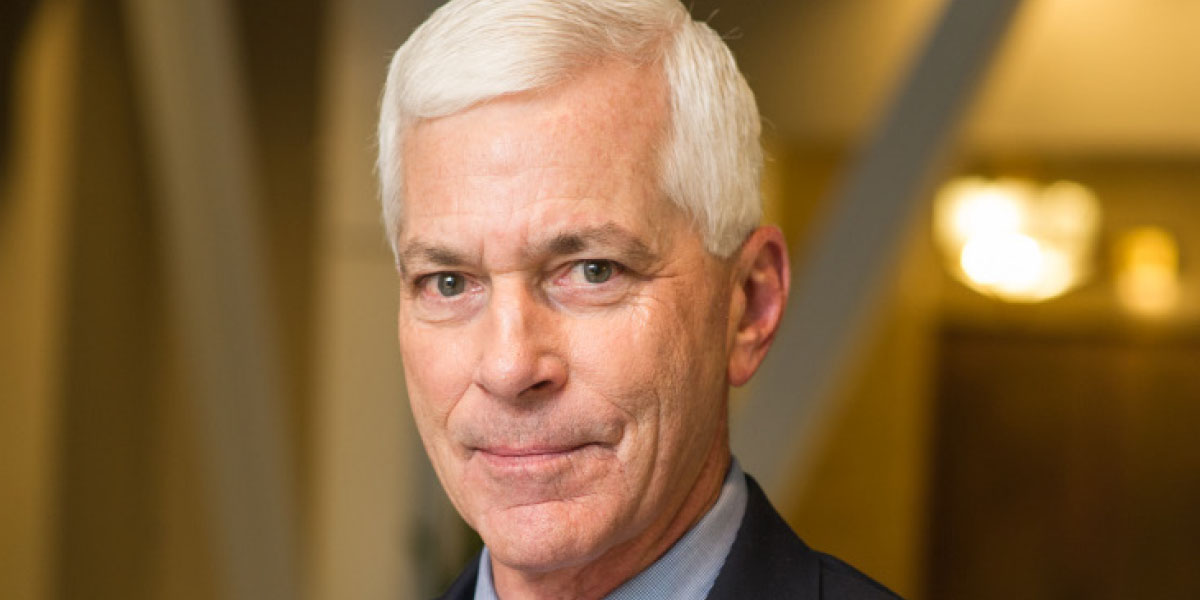
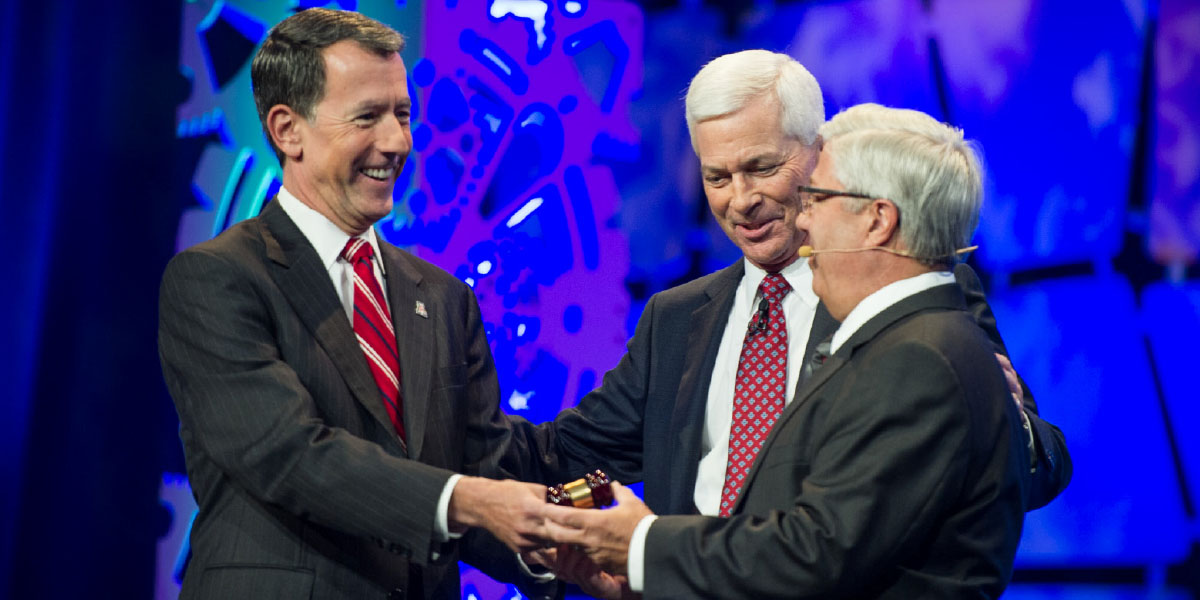 “When I think of John Walda, the first words that come to mind are ‘executive presence.’ He’s done a stellar job of representing NACUBO all around the country, and especially on Capitol Hill. The image he portrays is exactly what we hope that the public perceives of business officers. He’s a straight shooter, professional, intelligent, and knowledgeable, and he exudes a very high degree of integrity.” —Mary Lou Merkt, vice president for finance and administration, Furman University; and 2018–19 NACUBO Board Chair
“When I think of John Walda, the first words that come to mind are ‘executive presence.’ He’s done a stellar job of representing NACUBO all around the country, and especially on Capitol Hill. The image he portrays is exactly what we hope that the public perceives of business officers. He’s a straight shooter, professional, intelligent, and knowledgeable, and he exudes a very high degree of integrity.” —Mary Lou Merkt, vice president for finance and administration, Furman University; and 2018–19 NACUBO Board Chair